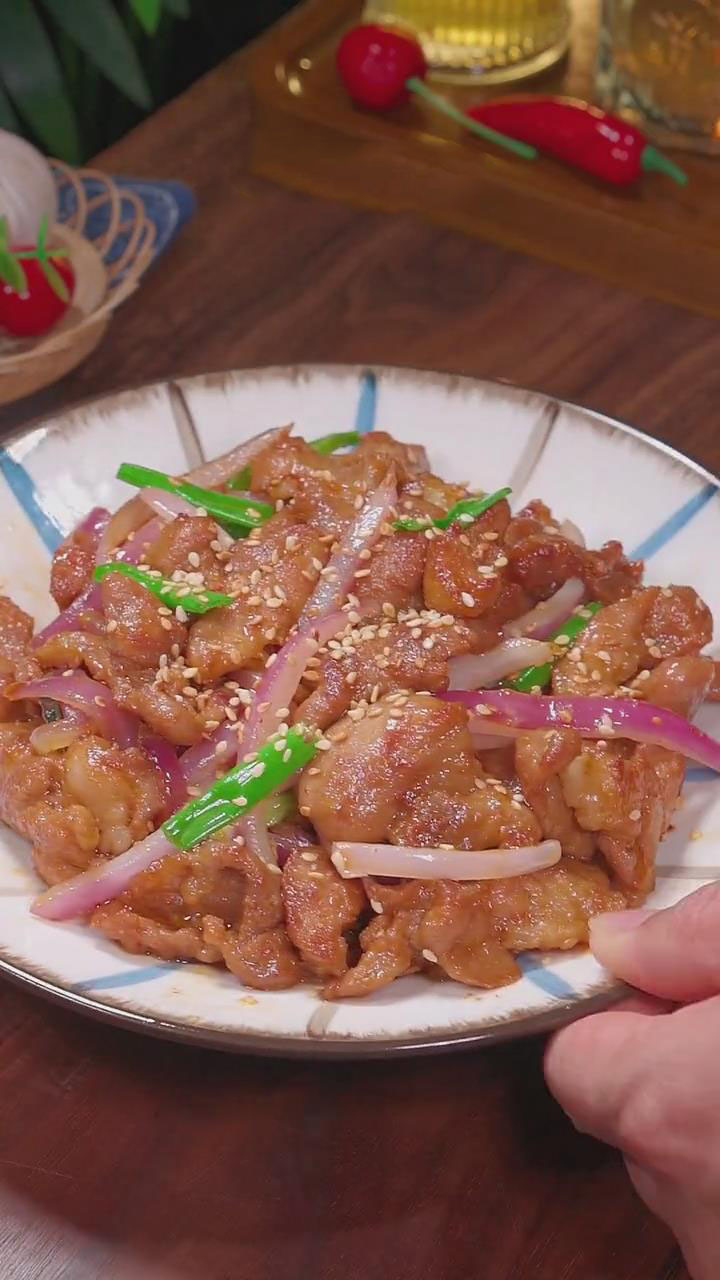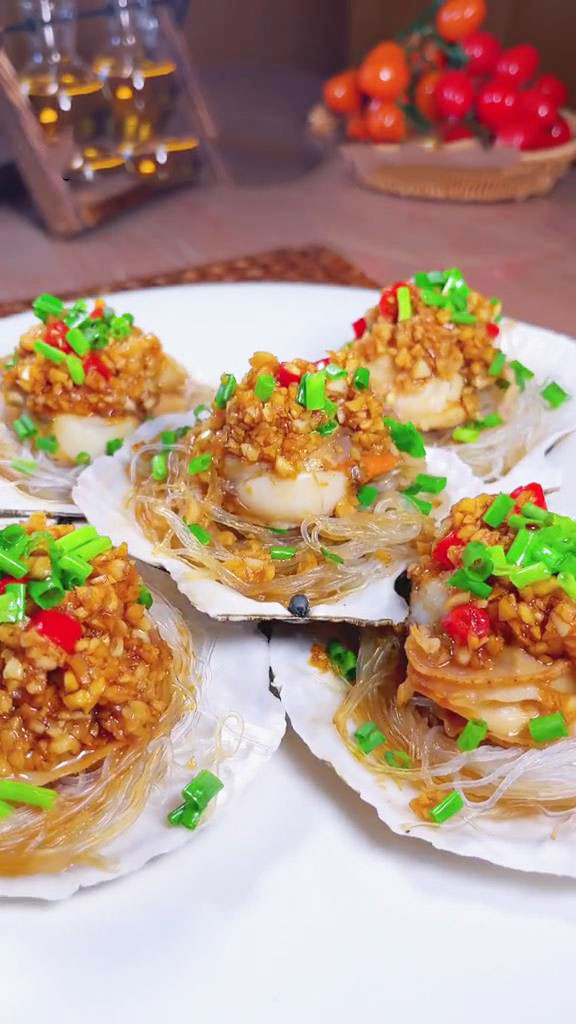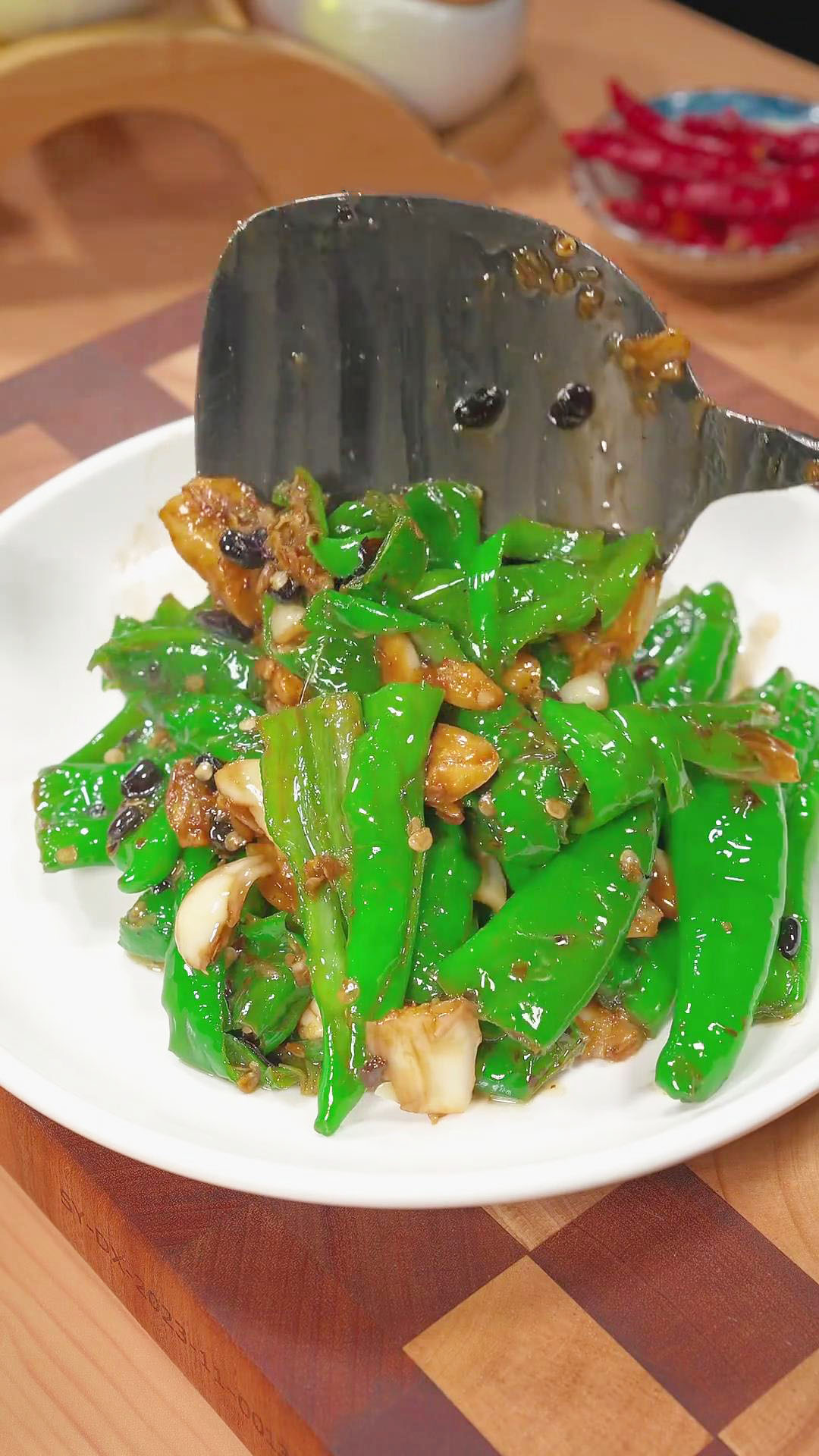Chinese salt and pepper pork is a delicious dish made with strips of pork butt cooked in under 30 minutes. It is marinated with a savory sauce and sauteéd with seasonings and the key ingredient – Chinese salt and pepper seasoning.
This dish is a favorite in Chinese cuisine, a popular Chinese takeout, and a staple meal for lunch or dinner. Make this recipe today with my easy recipe and discover what makes Chinese salt and pepper seasoning special for this dish.
Everything About Salt And Pepper Pork
My salt and pepper pork recipe uses pork butt to make it easier to cut into thin slices. Aside from thin pork butt slices, it’s generally up to you if you prefer a different pork cut and shape. Any pork cut will do as long as the marinade and seasonings are followed.
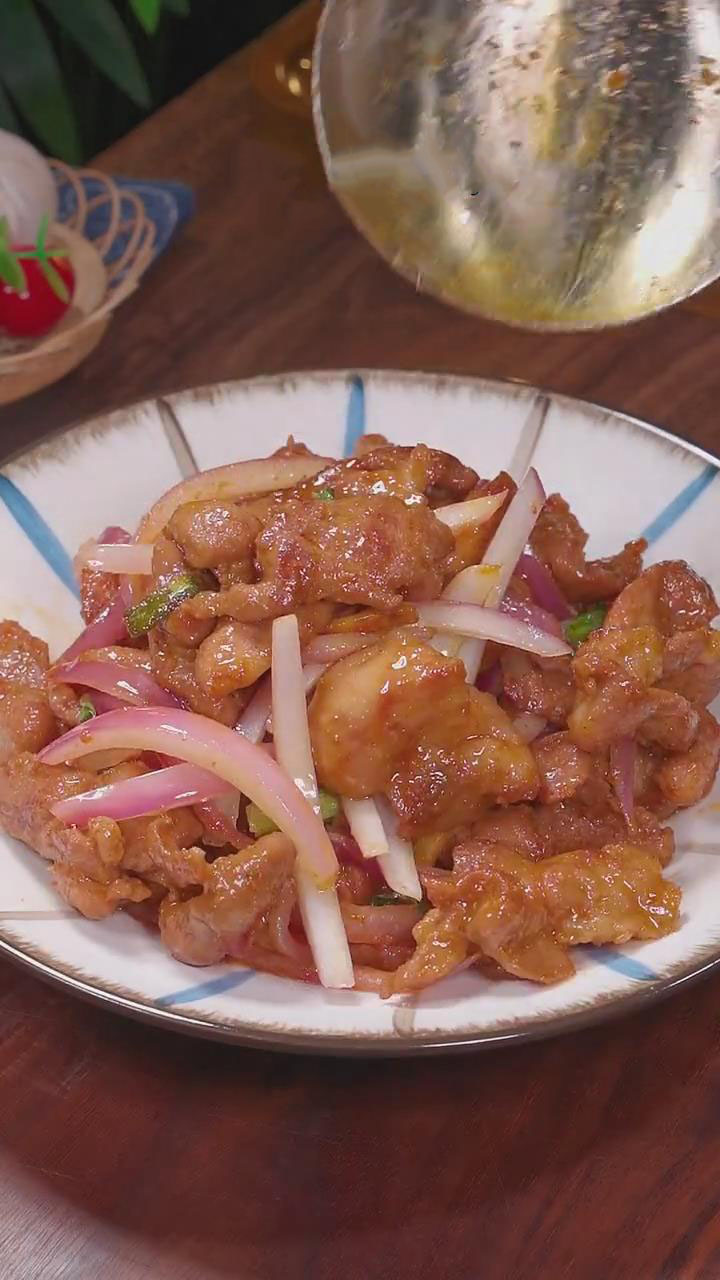
Generally, the recipe includes slathering and marinating the pork slices with light soy sauce, oyster sauce, sweet potato flour, and water. This sauce is massaged onto the pork slices until it is well-absorbed. Afterward, it is seasoned and stir-fried with ginger, garlic, onions, and salt and pepper seasoning.
This dish is best paired with rice or your favorite side dish such as Tofu With Minced Pork & Mushrooms or Salt And Pepper Potatoes. For your information, salt and pepper seasoning isn’t your regular salt and pepper mix. It is a combination of 6 spices, including Sichuan peppercorn, fennel seed, shrimp skin, white sesame, salt, Chinese Five Spice Powder, and paprika.
As a result, it is a bomb of flavors, making a dish taste sweet, salty, savory, warm, and earthy all at once. You can only get this special flavor with salt and pepper seasoning. So, I highly recommend making a large batch of this seasoning at home with my recipe here or buying one from your local Asian grocery store.
Ingredient Tips And Substitutes For Salt And Pepper Pork
In summary, my recipe uses pork butt slices, light soy sauce, oyster sauce, sweet potato flour, ginger, garlic, and onions. I have provided suggestions below if you need to modify or substitute any of the ingredients. Moreover, I share some recipe techniques that I discovered handy in the process of making the recipe.
Take a moment to review these suggestions before you get cooking in the kitchen.
- Type Of Pork Cut: Pork butt is an ideal cut for salt and pepper dishes. The fat melts into the pan and softens the meat. You can also use pork shoulder, boneless pork leg, or pork loin to substitute pork butt. If you plan to use pork chops for this recipe, I recommend using my other recipe, salt and pepper pork chops. It’s another delicious salt and pepper dish you won’t want to miss!
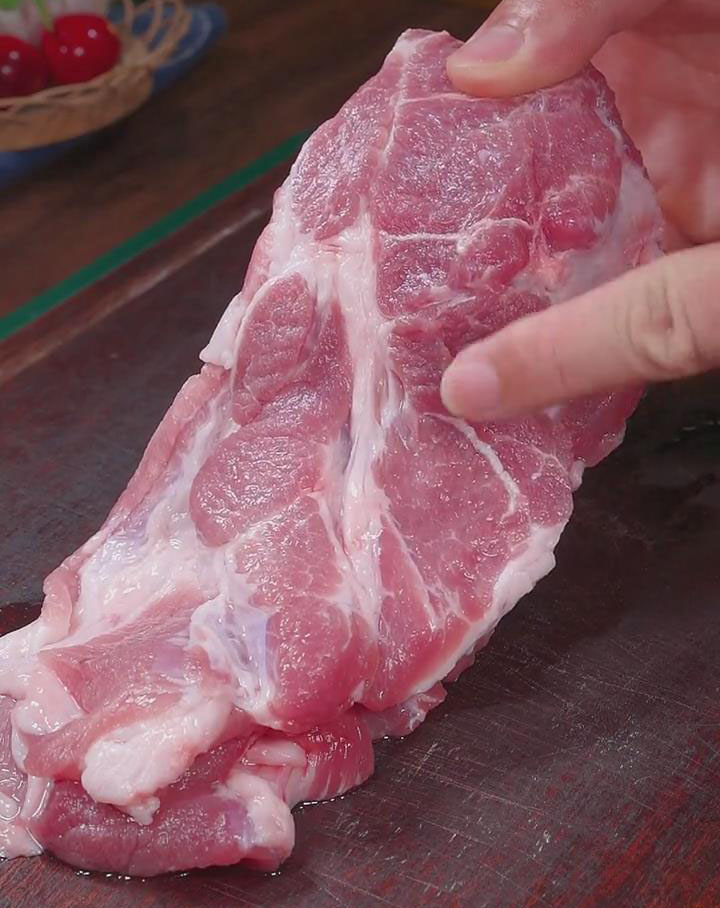
- How To Choose Pork Meat: As a rule of thumb, always choose the freshest pork meat. It should be pinkish to red in color with fat marbling. When the flesh is thoroughly cooked, it will lose its pink and reddish color. Avoid pork meat that has pale flesh and dark-colored bones. Moreover, it should not have any odd or ammonia-like smells. It should have the same fresh conditions even after keeping it in the freezer at home. If you aren’t sure if your pork is still fresh and in doubt if it can still be used, follow this golden rule – when in doubt, throw it out.
- Slicing The Pork: I cut the pork into thin slices about half a centimeter thick. You can cut the pork at a slight slant angle to give you wider pieces if the pork cut you are using is short in height. To make it easier to cut thin slices, freeze the pork and cut it when it is partially frozen. A partially frozen pork meat is stiff and firm to hold and does not bend or wobble when cutting with a knife. If you want to make the slices even thinner, you can also tenderize the meat with a meat hammer. Cut the pork into thin slices, then simply hammer the meat until you get the desired thickness. If you are using a different type of pork meat, you can also cut it into cubes or strips, instead of thin slices.
- Cooking Oil: I recommend using cooking oil with a high smoke point to reduce oxidation and be able to maintain high temperatures for a longer period of time. Types of oil with high smoke points are sesame, avocado, sunflower, canola, and peanut. The recipe doesn’t require deep frying, just a simple stir-fry with a little oil is all that’s needed.
- Sauce/Marinade: After cutting the pork into thin slices, coat it with a savory sauce for a deeper flavor. My recipe uses light soy sauce, oyster sauce, sweet potato flour, and water for the sauce. This sauce is massaged onto the pork to absorb the flavors. You can stir-fry it as soon as the sauce is absorbed or let it sit and marinate for a while for better absorption. Here are some alternatives for each ingredient of the sauce:
- Light soy sauce: You can use dark soy sauce as a substitute, but you may have to adjust the quantity to taste. Use tamari, liquid aminos, coconut aminos, or gluten-free soy sauce if you don’t have soy sauce.
- Oyster sauce: You can substitute oyster sauce with hoisin sauce, teriyaki sauce, kecap manis, Worcestershire sauce with soy sauce and sugar, oyster-flavored sauce, or fish sauce if you don’t have oyster sauce.
- Sweet potato flour: Sweet potato flour has a mild sweetness that complements a wide range of sweet and savory dishes. As a result, it gives the dish a distinct sweet potato taste. If you don’t have sweet potato flour, you can substitute it with sweet potato starch, potato flour, tapioca flour, rice flour, and arrowroot powder.
- Garlic: You’ll need garlic for stir-frying with pork. Garlic adds a nutty and pungent flavor to this dish. If you don’t have garlic but want the garlicky flavors, you can substitute 1 clove of garlic with 1/8 tsp of garlic powder or 1/4 tsp of granulated garlic. This will give you a kick of garlic flavor without the chunks of garlic cloves.
- Ginger: Ginger adds peppery and sweet flavors and a warming kick to the pork. You can swap fresh ginger with ground ginger. Use 1/4 to 1/2 tsp ground ginger for every 1 tbsp of fresh ginger.
- Salt And Pepper Seasoning: This seasoning is a unique blend of six spices that cannot be substituted with other spice mixes. There isn’t a single spice that has the same flavors as this, so I recommend making your own homemade salt and pepper mix or buying from a local Asian store. Having this seasoning at home is worth it because it can be used for a variety of salt and pepper dishes like salt and pepper tofu, salt and pepper potatoes, and salt and pepper chicken wings.
- Red And Green Onions: After seasoning the pork, it is stir-fried with red and green onions for extra flavor and color. Red onions are great for their subtle sweetness and crunch, while green onions add color and a bit of “oniony” flavor that is not as strong as regular onions. You can also use white and yellow onions. Nevertheless, any onion will taste good, with little significant difference in taste. If you don’t have fresh onions but want to add an “oniony” taste, you can use onion powder or granules.
How To Store And Reheat Salt And Pepper Pork
It is best to eat stir-fried foods like salt and pepper pork when freshly cooked. Once cooked, it should be kept in the fridge within 2 hours after cooking. Food left out for 2 hours or more is harmful as it can lead to bacteria growth.
When placed in the fridge, it should be stored in an airtight container to maintain its quality and avoid absorbing odors from other foods in the fridge. Moreover, it can be kept in the fridge for up to three days only.
To reheat leftover salt and pepper pork, I recommend using an oven, air fryer, or skillet to have a bit of crispy and charred texture. Although a microwave works well in reheating, the food tends to be too soggy. Here’s how to reheat salt and pepper pork.
- Oven or air fryer: Reheat the pork slices for 5 to 10 minutes at 350°F to 400°F. The temperature and time will differ depending on how much pork you need to reheat.
- Skillet: Add about 1 tbsp of oil to the pan and reheat on medium heat. You can also heat it without oil and simply toast it on both sides.
What You Prepare To Make Salt And Pepper Pork
Now that you know more about the ingredients, you’ll only need to prepare a non-stick pan for stir-frying. I recommend a non-stick pan so the pork maintains its texture to get a beautiful slightly caramelized finish.
You’ll also be needing a sharp knife and chopping board to cut the pork into thin slices. Here’s what you need to make salt and pepper pork.
Kitchenware
- Non-stick pan
- Spatula
- Knife
- Chopping board
Ingredients
Marinade
- 500g pork butt (thinly sliced)
- 1 tsp light soy sauce
- 1 tsp oyster sauce
- 1 tsp sweet potato flour
- 1 tbsp water
Stir-Fry
- Oil (adjust the amount according to the amount of pork for stir-frying)
- 10g ginger (thinly sliced)
- 10g garlic (thinly sliced)
- 1 tbsp or more of salt and pepper seasoning
- 10g green onions (1 to 2 inches long, green parts only)
- 10g red onions (thinly sliced)
Recipe Instructions To Make Salt And Pepper Pork
The recipe calls for two main steps: mix the sauce with the pork and stir-fry it with seasonings and vegetables. The dish can be done in just 30 minutes but can be longer if you decide to let the pork sit in the sauce for a few more minutes. Watch how I cooked the dish through my reels on Tiktok and Instagram.
Marinate The Pork
Thoroughly clean the pork meat by washing it with running water. Cut the pork into thin slices, about half a centimeter thick.
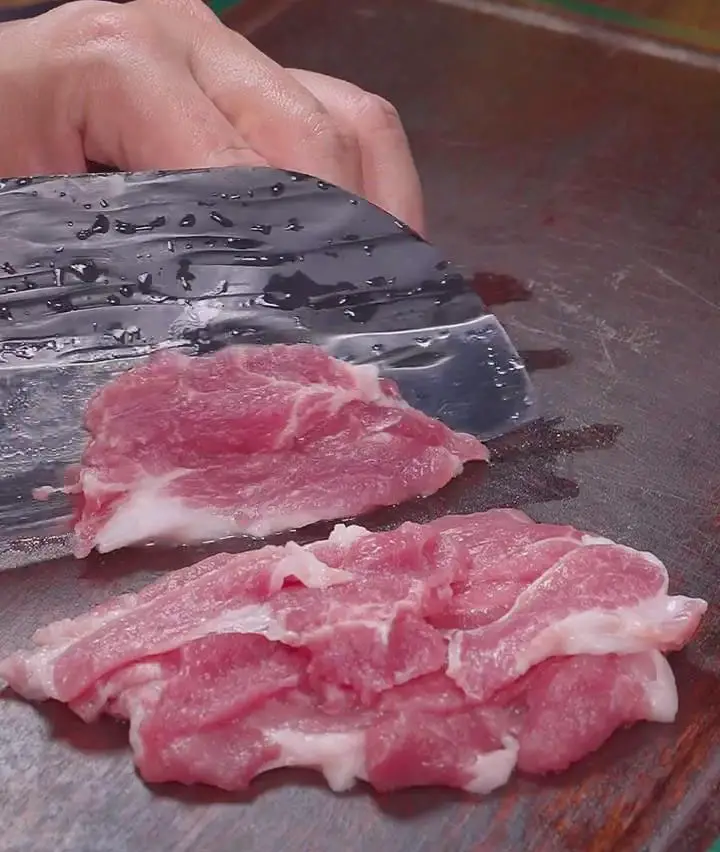
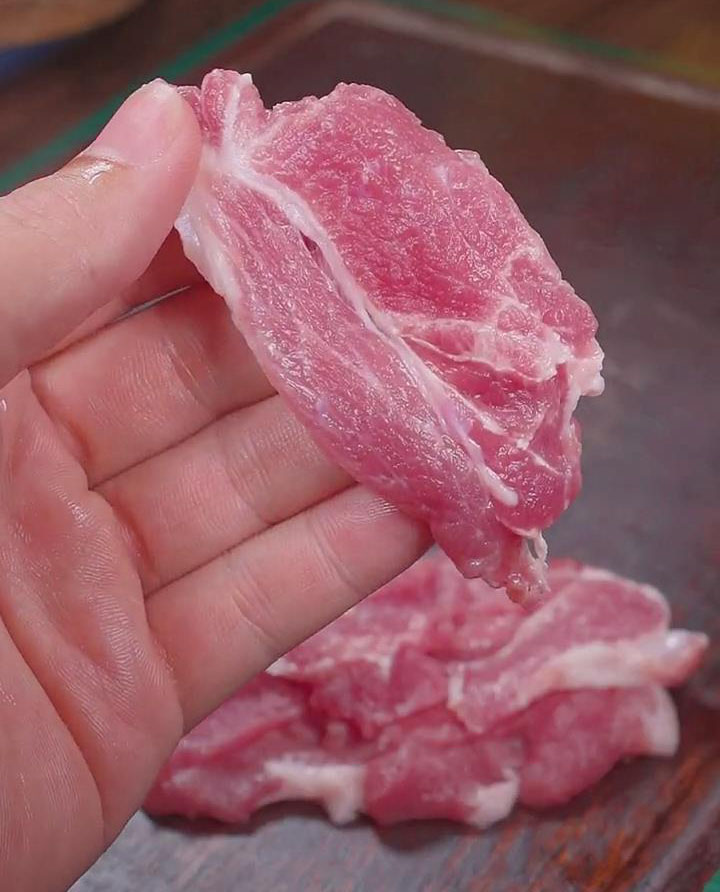
Marinate the pork with 1 tsp light soy sauce, 1 tsp oyster sauce, 1 tsp sweet potato flour, and 1 tbsp water.
Mix the sauce well and massage it onto the pork slices.
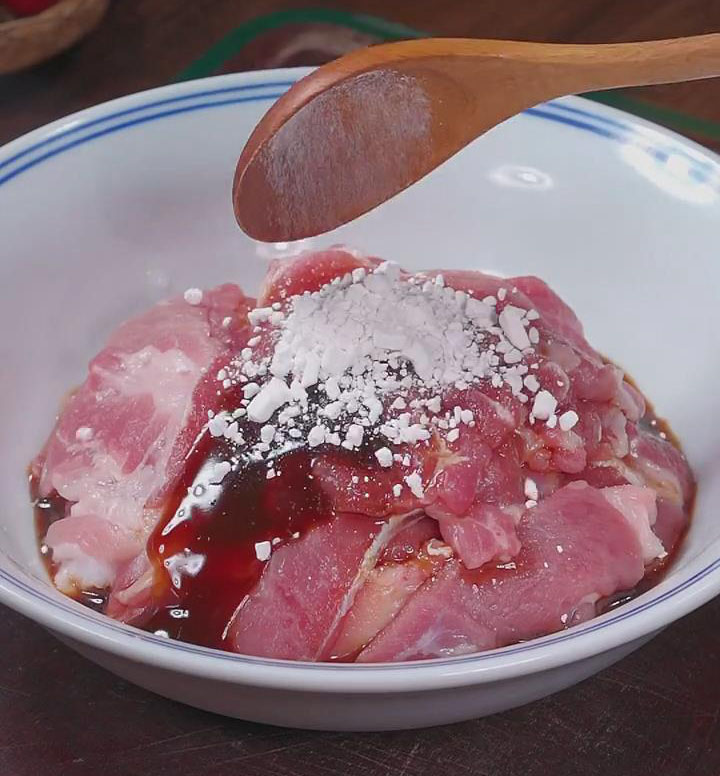
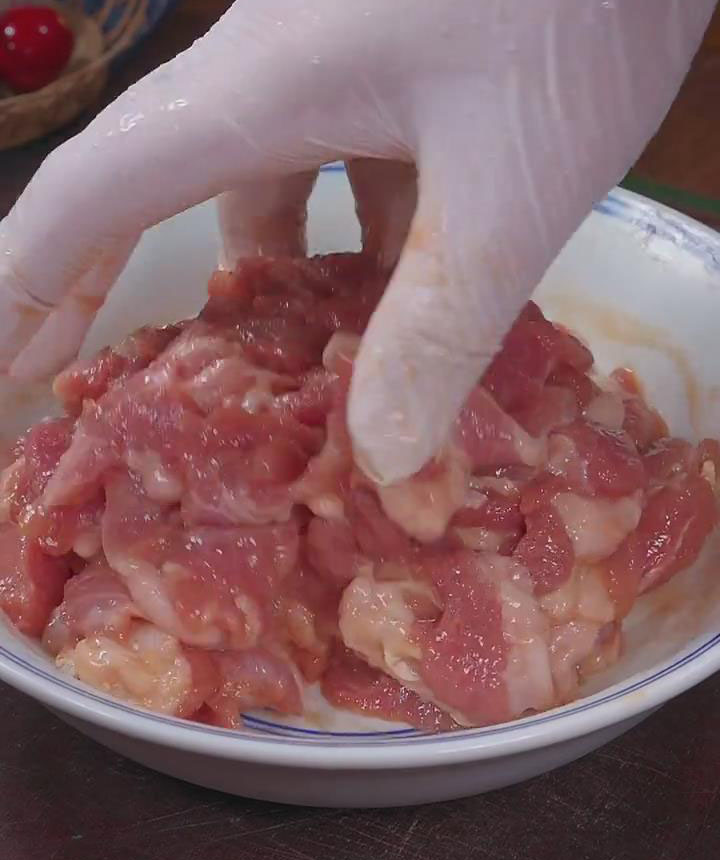
Stir-Fry The Pork
Heat oil in a non-stick pan. When the oil is hot, add the marinated pork, 10g ginger, and 10g garlic.
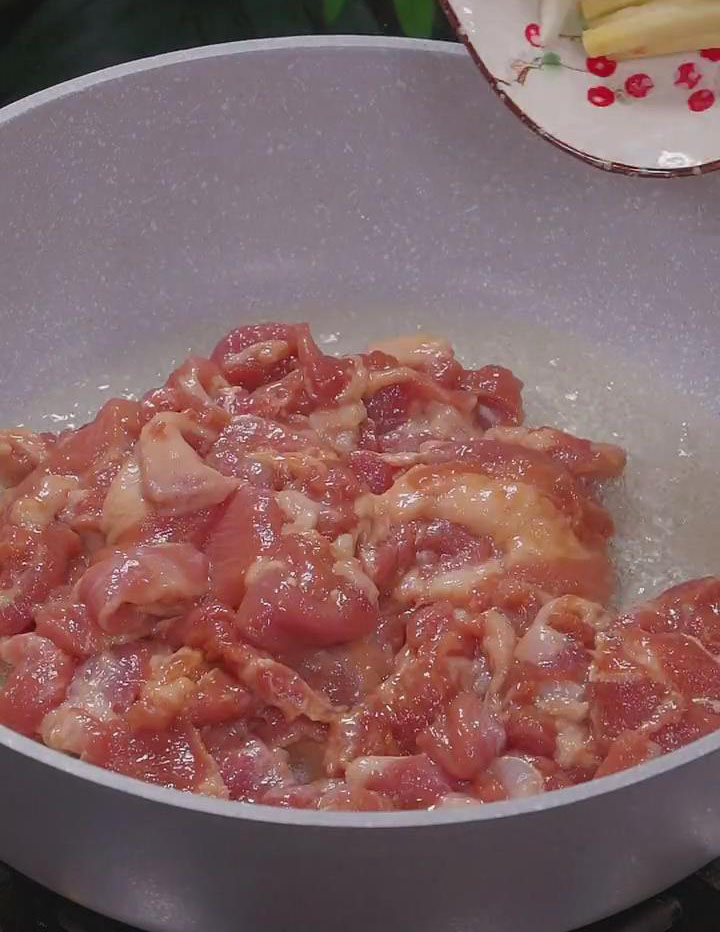
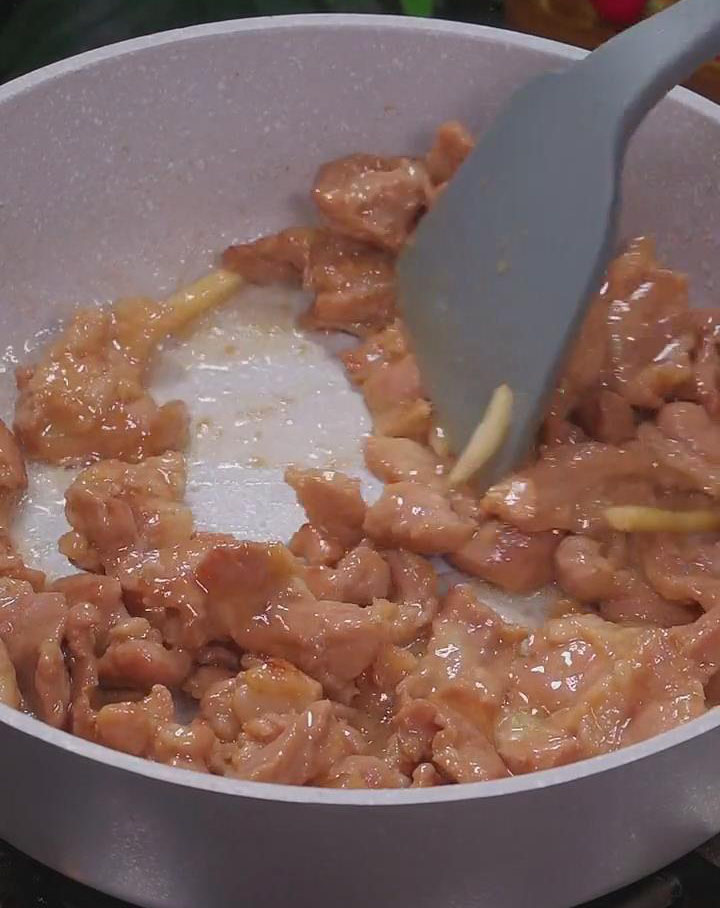
Stir the ingredients well. Then, add 1 tbsp of salt and pepper seasoning or adjust to taste.
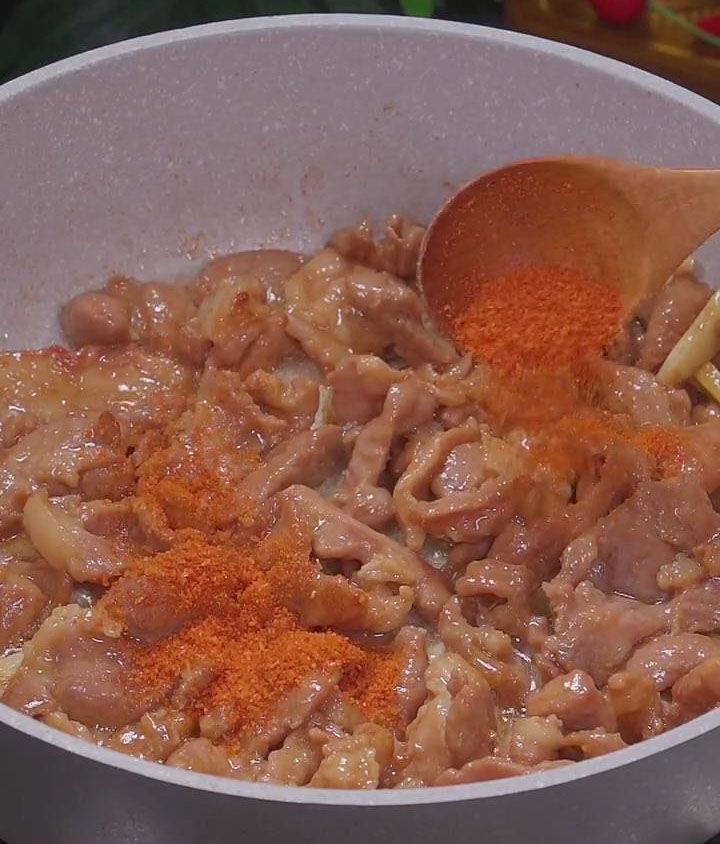
Continue stir-frying on high heat until the pork caramelizes and turns golden brown. Lastly, add thinly sliced red onions and green onions and mix well.
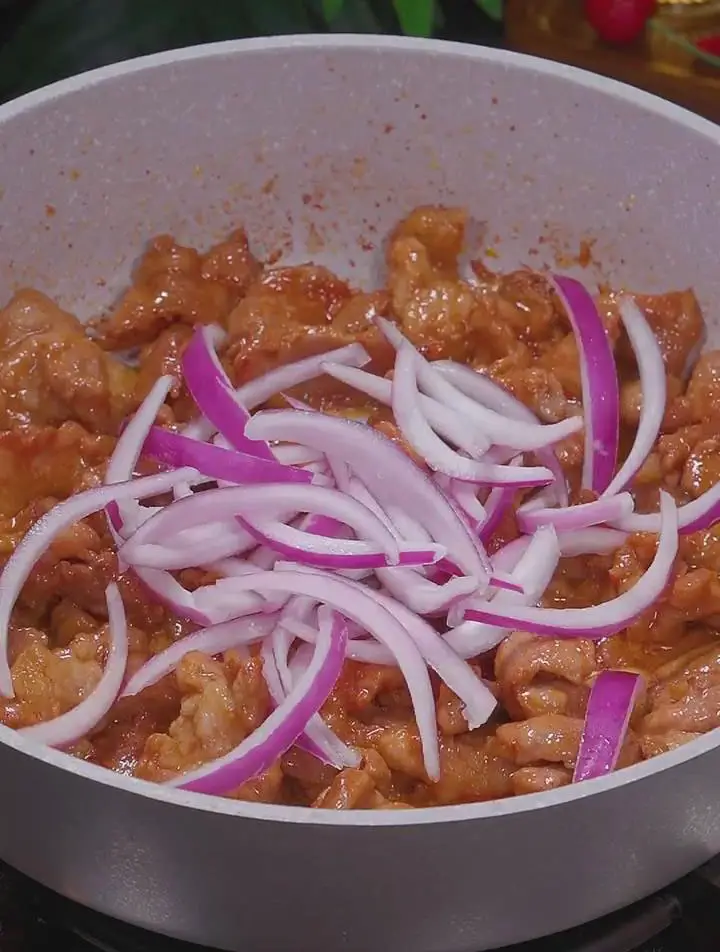
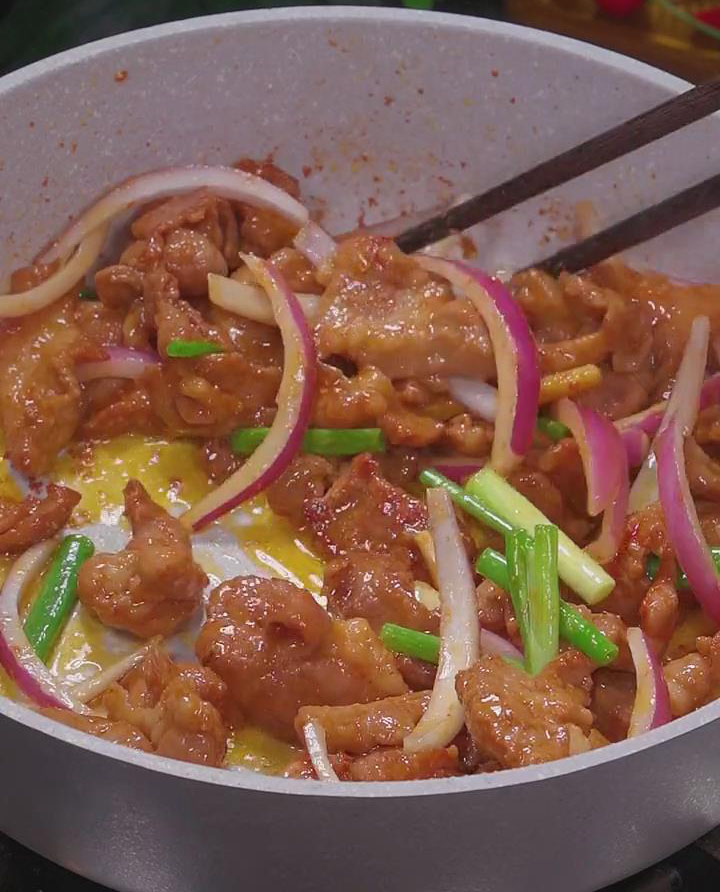
Serve and enjoy while hot and fresh.

Savory Chinese Salt And Pepper Pork
Equipment
- Non-stick pan
- Knife
- Chopping board
Ingredients
Marinade
- 500 g pork butt thinly sliced
- 1 tsp light soy sauce
- 1 tsp oyster sauce
- 1 tsp sweet potato flour
- 1 tbsp water
Stir-Fry
- Oil adjust the amount according to the amount of pork for stir-frying
- 10 g ginger thinly sliced
- 10 g garlic thinly sliced
- 1 tbsp or more of salt and pepper seasoning
- 10 g green onions 1 to 2 inches long, green parts only
- 10 g red onions thinly sliced
Instructions
Marinate The Pork
- Thoroughly clean the pork meat by washing it with running water.
- Cut the pork into thin slices, about half a centimeter thick.
- Marinate the pork with 1 tsp light soy sauce, 1 tsp oyster sauce, 1 tsp sweet potato flour, and 1 tbsp water.
- Mix the sauce well and massage it onto the pork slices.
Stir-Fry The Pork
- Heat oil in a non-stick pan.
- When the oil is hot, add the marinated pork, 10g ginger, and 10g garlic.
- Stir the ingredients well.
- Then, add 1 tbsp of salt and pepper seasoning or adjust to taste.
- Continue stir-frying on high heat until the pork caramelizes and turns golden brown.
- Lastly, add thinly sliced red onions and green onions and mix well.
- Serve and enjoy while hot and fresh.

